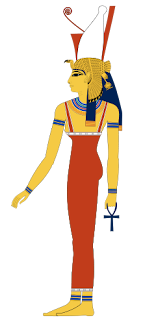(Image from HighSchoolLinguistics.Blogspot.Com)
Course Code/Title :
INTRODUCTION TO DESCRIPTIVE LINGUISTICS
Prerequisite :
ENG 1Course Credit : 3 units
Course Description:
Provides an overview of linguistics as a discipline, its development, levels
of structure, and its significance to English language teaching.
Course Objectives:
At the end of the
semester, the students should be able to:
-
discuss the origin and nature of human language;
- identify the different writing systems;
- identify phones by their properties;
- transcribe words using the International Phonetic Alphabet;
- identify the different word formation processes;
- diagram the structure of a sentence;
- identify the types of word meaning;
- give the meaning of expressions according to the context;
- express their appreciation to the uniqueness of human language; and
- to have integrated the PCU and CASTE values.
TIME
FRAME
|
CONTENT/SUBJECT
MATTER
|
Week 1
|
I. Introduction
to the Course
A. Getting
to know the instructor, the students, and the course
B. Distribution of course syllabus
C. Introduction to Descriptive Linguistics
|
Week 2
|
II. The
origin of human language
-- Theories on the origin of human language
|
Week 3
|
III. The
characteristics of human language
-- Human language vs. Animal communication
Quiz 1
|
Week 4
|
IV. Graphology
-- Types of writing systems
|
Week 5
|
V. Articulatory
Phonetics
A. The speech mechanism
B. Places of articulation
C. Manners of articulation
Quiz 2
|
Week 6
|
PRELIMINARY EXAMINATION
|
Week 7-8
|
VI. Phonology
A. Phones, Phonemes, and Allophones
B. Minimal pairs and sets
C. Phonotactics and syllables
D. Co-articulation processes
Quiz 3
|
Week 8-9
|
VII. Morphology
A. Word-formation processes
B. Kinds of morphemes
Quiz 4
|
Week 9-11
|
VIII. Syntax
A. Traditional grammar analysis
B. Immediate constituent analysis
C. Structural analysis
D. Phrase structure rules
E. Tree diagramming
Quiz 5
|
Week 12
|
MIDTERM EXAMINATION
|
Week 13-15
|
IX. Semantics
A. Conceptual and associative meaning
B. Semantic roles
C. Lexical relations
Quiz 6
|
Week 16-17
|
X. Pragmatics
A. Context
B. Reference and inference
C. Presupposition
D. Speech acts
E. Politeness
Quiz 7
|
Week 18
|
FINAL EXAMINATION
|
Textbooks/Materials:
Yule, G. (2007). The study of
language. Cambridge: Cambridge University Press.
Crystal, D. (2005). How language
works: How babies babble, words change meaning and languages love or die. Woodstock, NY: Overlook Press.
Fromkin, V., Rodman, R., & Hyams, N. (2010). Introduction to linguistics. Singapore: Cengage Learning Asia Pe. Ltd.
Guerrero, G. T. Instructional Minutes. URL: http://instructionalminutes.blogspot.com. Label: “Linguistics”







































